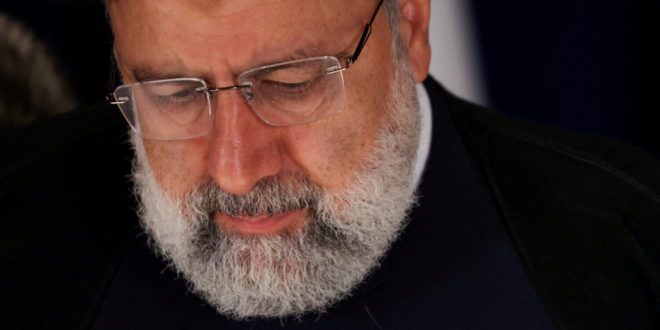The death of Iranian President Ebrahim Raisi in a helicopter crash on Sunday may have shocked the Middle East and broader world, but it is rather unlikely to alter Iran’s strategic direction in either domestic or foreign policy. While Raisi held the title of president, his authority was constrained by Iran’s supreme leader, Ayatollah Ali Khamenei, within whom ultimate power is vested in the Islamic Republic.
But even so, Raisi’s death does leave a power vacuum in Iran. Section 131 of the Iranian constitution calls for First Vice President Mohammad Mokhber to assume power next. But Mokhber is unlikely to have any meaningful influence or seek to succeed Raisi. He will instead, as long as the constitution is followed, be replaced by a successor following an election within fifty days from when Raisi’s death was declared.
For the regime, another round of presidential elections is a headache that it would almost certainly have preferred to avoid. The Guardian Council—the body that determines which candidates are sufficiently loyal enough to the Islamic Republic’s ideology to be permitted to run—thought it had in Raisi a leader who would be around to take Iran into the next generation, likely a post-Khamenei one.
With that plan now shattered, the Guardian Council will likely be even more strict about who it allows to campaign, determined to ensure the next president can defend and protect the revolution at a time of domestic and regional upheaval.
But the exclusion of more reformist candidates is likely to suppress enthusiasm and ensure that many Iranians view the election as neither open, nor fair, nor free. As a result, there’s good reason to be skeptical that the vote will engender a high turnout, especially given recent history. In the parliamentary elections in March of this year, officials reported a historic low turnout of under 41 percent, and some polling experts claim that the real turnout was far lower, closer to 15 or 16 percent.
At the same time, Raisi was not only widely expected to steer the succession of the supreme leader through the Assembly of Experts, but was also himself a top contender to succeed Khamenei. In the coming days there will be a lot of conjecture that without Raisi, Mojtaba Khamenei, the current supreme leader’s son, is more likely to accede to the supreme leader post.
Maybe. The reality is, it’s far too early for such a declaration. It’s likely that whoever succeeds Raisi as president will be someone who has a similar profile: regime insider, religious credentials, and ultra-conservative. The long-held criticism against Mojtaba is that he lacks the sufficient religious qualifications to serve in the position of supreme leader. The fact that his accession would produce a question of dynastic succession—which would fly in the face of the 1979 revolution in which the shah of Iran was overthrown in favor of a leader with impeccable religious credentials—also works against him. Mojtaba might find sufficient support, however, if the Islamic Revolutionary Guard Corps (IRGC) is determined to play an even more prominent and influential role under the next supreme leader. If the IRGC was preparing to do so, it would be highly unlikely that anyone would be elevated to the position without the IRGC’s acquiescence. That could work in Mojtaba’s favor given his years-long close association with the IRGC and closeness to the broader Iranian security apparatus.
For some Iranians, Raisi will be mourned as a president and a devotee of the revolution. For a small, select group of the most influential Iranian leaders, he will be both mourned and appreciated for his unintentional sacrifice—since his death ensures an unexpected opportunity for someone to gain a level of power and influence far sooner than anyone expected.
But for many ordinary Iranians, his death is already being celebrated by those who view him first and foremost as the “Butcher of Tehran,” the man under whose authority thousands of political prisoners were sent to their deaths after essentially show trials.
Iranian leaders and political institutions are already under significant pressure stemming from the country-wide protests following the death of Mahsa Amini in September 2022. Iranian leaders and officials are almost certain to be concerned that Raisi’s death could prompt new protests and rounds of anger in Iran. That’s not because Raisi drew a disproportionate amount of protesters’ anger—rather the opposite. He largely was viewed as little more than Khamenei’s pawn. Given that, some Iranians may see this moment as an opportunity to reignite broader anger toward the regime as a reminder that it does not really matter who the president is, only that the regime itself remains in power and is unwilling to change.
But any such protests are likely to be crushed not only by the police but by the Basij, the voluntary militia that constitutes one branch of the IRGC and will be prepared for such a situation, eager to stamp it out as quickly as possible.
Raisi’s death is surely unexpected but unlikely to be particularly impactful. Meaningful change in Iran’s strategic direction can only come from the supreme leader, and his position is not yet vacant.
 Eurasia Press & News
Eurasia Press & News


